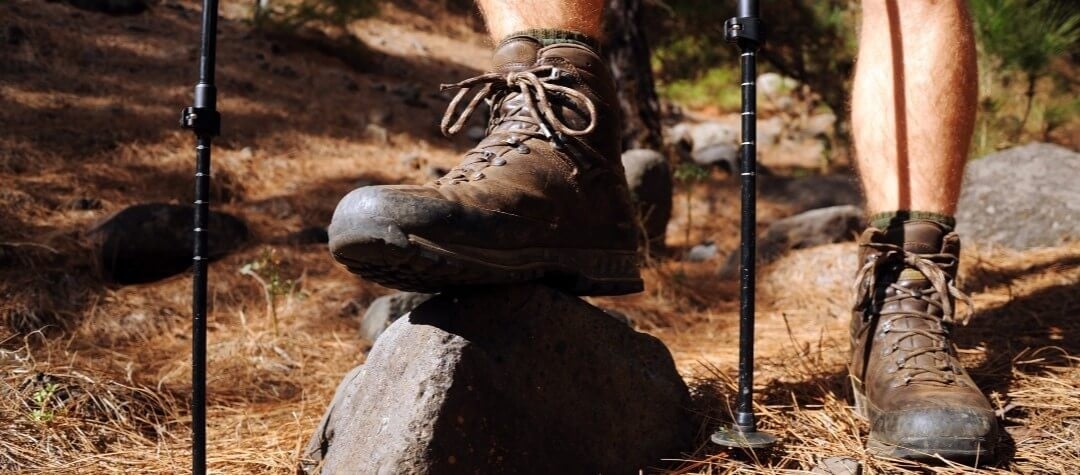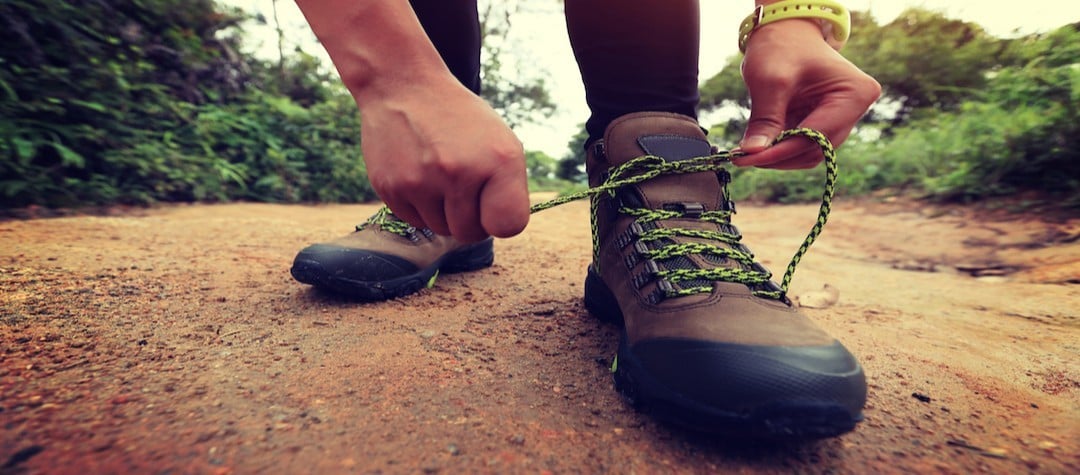Booking a walking holiday can be a great way to get fit and socialise with friends – make sure you’re fully prepared with our realbuzz 7 stage guide.
Walking holidays provide us with a perfect opportunity to enjoy a social trip in scenic surroundings, while also increasing health and fitness levels and enjoying a break from home.
However, before you set off, it’s important to assess your current fitness level and make sure you will be able to last the pace on a tough walk. So, to get fit for your walking holiday, just follow our 7-step realbuzz training guide.
It’s important to be fit enough to enjoy your holiday. That way, you shouldn’t be left nursing aching muscles after the first day or pick up an injury that will spoil your enjoyment and maybe even deter you from carrying on. And while assessing your current fitness and sensibly improving your walking fitness, you will also have time to take into account other factors such as how to strengthen key muscles for your walk, and where to choose for your walking holiday in the first place.
1. Where are you now?
The first stage is to accurately assess your level of fitness. It’s time to honestly assess your current fitness levels. Without that understanding, you can’t measure your progress or start at the correct level. From the activity levels described in the following table, check out which is the nearest match to your current level of fitness, then follow the training programme best suited to you and your goals.
A - I regularly work out, doing one or two resistance training and at least three CV (or exercise class) sessions each week.
B - I carry out CV training three or more times per week.
C - I resistance train twice or more per week.
D - I exercise occasionally (CV or resistance).
E - I haven’t exercised for some time.
2. Which training plan is right for you?
On the basis of your answers in the previous section, you can consult the following table to match your fitness level with the most suitable training programme. Just follow the specific guidelines on cardiovascular (CV) and resistance training, then you’ll be all set to go.
| Training programme category | CV training | Resistance training | Training notes |
| A | Make sure your current programme includes plenty of walking, adding some back-to-back sessions. | Change your training focus to concentrate on leg exercises. | You’re in good shape. Continue with your training, including the recommended adaptations. |
| B | Make sure your current programme includes plenty of walking, adding some back-to-back sessions. | Start with a single leg exercise session each week, building to two sessions as your fitness improves. Use light weights to begin with, only adding weight when you are comfortable with the exercise and capable of stepping up. | You have a good foundation, now look to factor in resistance training to fully prepare for your walk. |
| C | Start a gradual walking programme. Build to a minimum of three sessions a week, eventually equalling the duration of a single day’s walking. | Continue with your current programme concentrating on leg exercises. | Your resistance training background should ensure you have good all-round strength. Your primary focus will now be CV exercise. |
| D | Build your CV session frequency to at least three sessions a week. | Build to two weekly leg exercise sessions as fitness improves. Use light weights to begin with, only adding weight when you are comfortable with the exercise and capable of stepping up. | You will have a double focus, CV and resistance training. Allow yourself sufficient rest to allow your body to adapt to the increase in training volume across both disciplines. |
| E | Start a gradual CV walking programme. Build to a minimum of three sessions each week and equalling the duration of a single day’s walking. | Start with a single leg exercise session each week, building to two sessions as your fitness improves. Use light weights to begin with, only adding weight when you are comfortable with the exercise and capable of stepping up. | Have a check-up with your doctor before you begin, so you have the all-clear to start exercising. After that, look for gradual progression. Start your training as early as possible. |
3. Where are you going?
To assess the level of fitness you need for your walk, you need to properly read up on the information you have for the holiday you’re choosing or research as fully as possibly the holiday goal you have in mind, including details of the area’s topography and climate.
Factors to consider include duration, rest days, terrain, whether you’re carrying a load and distances covered each day. Walks vary considerably from completely supported tours with rest days, where all your equipment and baggage is carried, to unsupported and tough adventures in challenging locations. From this information you will have an idea of how soon you need to start your programme.
A walking holiday doesn’t necessarily involve trekking to the ends of the earth, carrying all your worldly goods, or tramping huge distances for 12 hours a day against a rigid schedule. It may instead involve a chance to explore nature trails or a supported tour with your luggage transported between hotels – this is an increasingly-popular way of enjoying a walking break. But in any case, you’ll need to undertake a good level of planning.
4. Getting started
Look to begin your training as early as possible, giving you the maximum amount of time to adapt and strengthen your ability in readiness for your holiday. Avoid trying to cram several months of specific training into a couple of weeks, because as well as arriving totally unprepared, you are likely to end up injured and having to postpone your walk. By starting in good time, you can factor in plenty of rest days as you build your fitness and easily incorporate your training into your routine, as opposed to beginning late and trying to fast-track your fitness at the exclusion of everything else.
5. CV training
Cardiovascular (CV) walking training should form the foundation of your walking-fit training programme. Without good CV fitness, you will be unable to complete each day. Look to carefully progress your CV fitness so that in the final weeks, you are comfortable with the maximum daily distances you will encounter. Any CV exercise helps, but walking is the most suitable discipline as it replicates the actual requirements of your holiday. Also, if possible, try to train on similar terrain.
As an example, for a more mountainous walking holiday, try and get off-road on to trails and into the hills. Off-road training is more challenging than purely road walking and you will strengthen both your ankles and knees, better preparing you for the demands of your holiday. A minimum of three sessions per week should be your aim, including some back-to-back sessions later in your programme, similar to your walking days.
6. Resistance training
Training with weights will build specific strength in the key muscles you use when walking. The main focus area is the legs, but exercises for the arms (biceps and triceps), back (particularly if carrying a rucksack) and core are extremely beneficial. Aim to build up to two sessions per week and make sure you get correct instruction so you carry out the exercises correctly, get the maximum benefits from your training time, and - most importantly - avoid injury. A programme focusing on these key areas and including a warm-up and cool-down should only take 30 to 40 minutes, so it can be fitted into your daily routine without too much difficulty.
7. Ready to go
After following the realbuzz walk-fit programme you will be ideally placed to get the absolute best from your holiday. The last thing that’s left to do is head off and enjoy your holiday.















